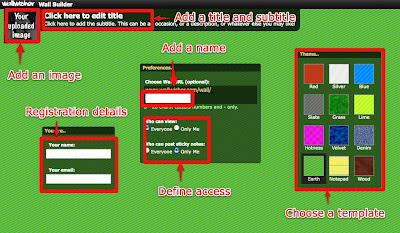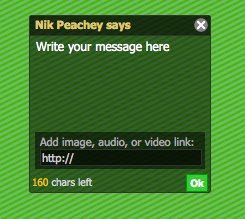Moodle is a magnificent free product and has the potential to enable schools and teachers to build wonderfully unique interactive online learning courses in which learner interaction can be tracked, measured and responded to. Despite this the vast majority of Moodle courses I see are a long list of Word and PDF documents with at best a few forums that enable a minimum of human social interaction.
Given the state of many of these courses, it’s no wonder that drop out rates for online learning are so high. And of course Moodle isn’t the only culprit. Many of the other commercially available LMS (learning management systems) and VLE (virtual learning environment) platforms aren’t doing any better.
Moodle has been around now since 2002 and research carried out in 2013 showed that more than 7.3 million students had studied in more than 83 thousand registered sites.
So why is it that so little progress has been made in developing innovative courses that really generate interaction with media rich content?
The problem surely isn’t Moodle, because the platform is capable of delivering all of the above.
The reality is that there are a number of causes:
So given all of these problems is it worth using Moodle or any other platform to develop online and blended learning for your students?
The answer is of course a resounding yes. To ignore the potential that online learning and new technology has to offer is to be like King Canute trying to order back the sea.
But to use technology effectively education establishments have to approach online learning with their eyes open.
Best
Nik Peachey
Given the state of many of these courses, it’s no wonder that drop out rates for online learning are so high. And of course Moodle isn’t the only culprit. Many of the other commercially available LMS (learning management systems) and VLE (virtual learning environment) platforms aren’t doing any better.
Moodle has been around now since 2002 and research carried out in 2013 showed that more than 7.3 million students had studied in more than 83 thousand registered sites.
 |
| Image from ELTPics: https://flic.kr/p/jBXAwK |
So why is it that so little progress has been made in developing innovative courses that really generate interaction with media rich content?
The problem surely isn’t Moodle, because the platform is capable of delivering all of the above.
The reality is that there are a number of causes:
- I think it’s fair to say that Moodle isn’t the most intuitive of platforms to work with. A lot of progress and improvements have been made, but it’s inevitable that a product with multiple modules constructed by different people is likely to result in some inconsistencies of look and feel.
- The fact that Moodle is seen as a ‘free’ platform and so a ‘cheap’ way to get learning online is another factor. Schools start using the platform with the impression that it won’t require much financial backing and that once they have provided the platform teachers will just be able to get their classes online.
- This brings me to the next point and that is lack of training. Most teachers I have met who use Moodle do so with only the most minimal and basic training and again this comes back to the perception that Moodle is a cheap solution. Many school managers seem to think that a few hours of training is enough to get their teachers designing great online courses. It’s not! Training to use Moodle effectively takes considerable time and needs to be constantly reinforced and renewed.
- A second element of training which is often overlooked is instructional design. A teacher may well be marvellous at developing and delivering their own materials in the classroom, but when it comes to converting those materials into effective online learning units there is a new level of skill and understanding that they need. Understanding the instructional design potential of an online platform and how to structure materials so that students progress through an online environment requires training and experience.
- Another factor in this mix is that the Moodle platform is often seen as the ‘property’ and responsibility of the IT department and as such they make the platform as secure as possible. Often this means that teachers’ access to many of the different features and potential that Moodle can deliver are hidden from the teacher and they don’t have the opportunity to experiment with the platform and learn for themselves.
So given all of these problems is it worth using Moodle or any other platform to develop online and blended learning for your students?
The answer is of course a resounding yes. To ignore the potential that online learning and new technology has to offer is to be like King Canute trying to order back the sea.
But to use technology effectively education establishments have to approach online learning with their eyes open.
- It isn’t a cheap solution.
- It will require a significant investment in training for teachers
- Teachers won’t just construct wonderful online courses in their free time. Developing good online materials takes time. More time than it takes to develop paper-based face to face materials, so they will need to be paid for this time.
- Teachers need to be trained at all levels of the platform including the admin level, not just at teacher level.
How about ready made courses?
Knowing all of this schools may be tempted to by an ‘off the shelf’ solution with all the content ready made, but I would be wary of this type of ‘one size fits all’ content. In many cases the content has just been adapted from a course book with a copious amounts of drag and drop and gap-filling activity mixed with a little multimedia and very little student - teacher or peer to peer interaction built in and no sign of any authentic materials or personalisation. These courses are often dull beyond belief and fail to engage the students.
The best online courses, just like the best face-to-face courses, are usually designed by teachers who have developed an understanding of the needs and interests of their students and can choose content which they will enjoy and find engaging.
So, if platforms like Moodle are really to be used to develop effective and engaging learning which realises the potential of online and blended learning modes of delivery, then we must have managers who are willing to invest in developing the skills of their teachers and teachers who are willing to meet the challenges of new technology head on and accept their changing and more diverse roles as teachers, mentors and instructional designers.
For teachers who would like to try to develop their own Moodle skills.
You can register for a free Moodle platform at: http://www.mdl2.com/ It takes a few moments to register and then you have your own Moodle platform to use as a sandpit.
Here are a few quick video tutorials that can help get you started.
The best online courses, just like the best face-to-face courses, are usually designed by teachers who have developed an understanding of the needs and interests of their students and can choose content which they will enjoy and find engaging.
So, if platforms like Moodle are really to be used to develop effective and engaging learning which realises the potential of online and blended learning modes of delivery, then we must have managers who are willing to invest in developing the skills of their teachers and teachers who are willing to meet the challenges of new technology head on and accept their changing and more diverse roles as teachers, mentors and instructional designers.
For teachers who would like to try to develop their own Moodle skills.
You can register for a free Moodle platform at: http://www.mdl2.com/ It takes a few moments to register and then you have your own Moodle platform to use as a sandpit.
Here are a few quick video tutorials that can help get you started.
- How to add an image to Moodle and size it correctly
This video shows how to edit the html code to control the space the image takes on the screen. - Formatting a Moodle page
This video shows how to make the Moodle page look more attractive and professional - Adding an image to a Moodle webpage
This video shows how to add an image to a Moodle page - Adding a YouTube video to Moodle
This video shows you how to embed a video from YouTube into a Moodle page - Embedding a webpage into a Moodle page
This video shows you how to embed a webpage from a different site into a Moodle page so that it appears as part of the Moodle course - Creating a questionnaire
This video shows you how to create the questionnaire framework. - Adding questions to a questionnaire
This video shows how to add questions to the questionnaire once the framework has been created. - How to create a quiz
This shows how to create the quiz framework before adding questions - How to add questions to a quiz
This shows how to add questions to your quiz once you have created it.
Best
Nik Peachey


























